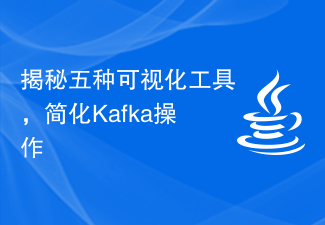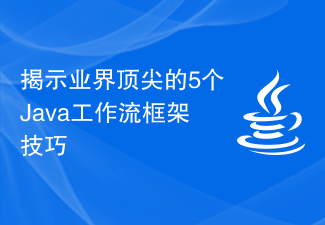
Golang plug-in secrets: To understand the five most popular plug-ins, specific code examples are needed
Introduction: With the rapid development of Golang in the field of web development, more and more More and more developers are starting to use Golang to develop their own applications. For Golang developers, plug-ins are an important tool to improve development efficiency and expand functionality. This article will take you through the five most popular plugins in Golang and provide corresponding code examples.
1. Gin framework plug-in
Gin is one of the most popular web frameworks in Golang. It provides a fast and concise way to build high-performance web applications. The Gin framework provides a wealth of middleware plug-ins that can help developers implement authentication, logging, error handling and other functions.
The following is an example that demonstrates how to use the Gin framework's authentication plug-in:
package main
import (
"github.com/gin-gonic/gin"
"github.com/appleboy/gin-jwt"
)
func main() {
r := gin.Default()
// 身份验证中间件
authMiddleware, err := jwt.New(&jwt.GinJWTMiddleware{
Realm: "test zone",
Key: []byte("secret key"),
Timeout: time.Hour,
MaxRefresh: time.Hour,
IdentityKey: "id",
Authenticator: func(c *gin.Context) (interface{}, error) {
var loginVals Login
if err := c.ShouldBind(&loginVals); err != nil {
return "", jwt.ErrMissingLoginValues
}
userID := loginVals.UserID
password := loginVals.Password
if (userID == "admin" && password == "admin") || (userID == "test" && password == "test") {
return userID, nil
}
return nil, jwt.ErrFailedAuthentication
},
PayloadFunc: func(data interface{}) jwt.MapClaims {
if v, ok := data.(string); ok {
return jwt.MapClaims{"id": v}
}
return jwt.MapClaims{}
},
IdentityHandler: func(c *gin.Context) interface{} {
claims := jwt.ExtractClaims(c)
return claims["id"]
},
})
if err != nil {
log.Fatalf("Failed to create JWT middleware: %v", err)
}
// 使用身份验证中间件
r.Use(authMiddleware.MiddlewareFunc())
// 添加保护路由
r.GET("/protected", authMiddleware.MiddlewareFunc(), func(c *gin.Context) {
c.JSON(http.StatusOK, gin.H{"data": "protected"})
})
// 启动服务器
if err := r.Run(":8080"); err != nil {
log.Fatal("Failed to start server: ", err)
}
}2. Cobra command line plug-in
Cobra is a commonly used command line framework in Golang , can help developers build elegant command line applications. It provides a simple and easy-to-use API that can help developers define commands, subcommands, flags, parameters, etc.
The following is an example that demonstrates how to use the Cobra plug-in to define a simple command line application:
package main
import (
"log"
"github.com/spf13/cobra"
)
func main() {
rootCmd := &cobra.Command{
Use: "myapp",
Short: "A simple CLI application",
Run: func(cmd *cobra.Command, args []string) {
// 执行应用程序的主要逻辑
log.Println("Hello, Gopher!")
},
}
// 添加子命令
rootCmd.AddCommand(&cobra.Command{
Use: "greet",
Short: "Greet the user",
Run: func(cmd *cobra.Command, args []string) {
log.Println("Hello, " + args[0])
},
})
// 启动命令行应用程序
if err := rootCmd.Execute(); err != nil {
log.Fatal("Failed to start CLI application: ", err)
}
}3. GORM database plug-in
GORM is the most popular in Golang The popular database ORM (Object Relational Mapping) library provides a simple and easy-to-use API to help developers operate the database conveniently.
The following is an example that demonstrates how to use the GORM plug-in to connect to a MySQL database and create a simple data model and database table:
package main
import (
"log"
"gorm.io/driver/mysql"
"gorm.io/gorm"
)
type User struct {
ID uint
Name string
Age int
}
func main() {
dsn := "username:password@tcp(127.0.0.1:3306)/dbname?charset=utf8mb4&parseTime=True&loc=Local"
db, err := gorm.Open(mysql.Open(dsn), &gorm.Config{})
if err != nil {
log.Fatal("Failed to connect database: ", err)
}
// 迁移数据表
err = db.AutoMigrate(&User{})
if err != nil {
log.Fatal("Failed to migrate database: ", err)
}
// 创建用户
user := User{Name: "Alice", Age: 18}
result := db.Create(&user)
if result.Error != nil {
log.Fatal("Failed to create user: ", result.Error)
}
log.Println("Created user:", user)
// 查询用户
var users []User
result = db.Find(&users)
if result.Error != nil {
log.Fatal("Failed to query users: ", result.Error)
}
log.Println("Users:", users)
}4. Viper configuration file plug-in
Viper is the most popular configuration file library in Golang. It supports multiple configuration file formats (such as JSON, YAML, TOML, etc.) and can help developers easily read and parse configuration files.
The following is an example that demonstrates how to use the Viper plug-in to read and parse configuration files in JSON format:
package main
import (
"log"
"github.com/spf13/viper"
)
func main() {
viper.SetConfigFile("config.json")
err := viper.ReadInConfig()
if err != nil {
log.Fatal("Failed to read config file: ", err)
}
data := viper.GetString("data")
log.Println("Data:", data)
dbHost := viper.GetString("database.host")
dbPort := viper.GetInt("database.port")
dbUser := viper.GetString("database.user")
dbPassword := viper.GetString("database.password")
log.Println("Database:", dbHost, dbPort, dbUser, dbPassword)
}5. Godotenv environment variable plug-in
Godotenv is in Golang A commonly used environment variable library, which can help developers load environment variables from files and set them as environment variables of the current process.
The following is an example that demonstrates how to use the Godotenv plugin to load environment variables from an .env file:
package main
import (
"log"
"github.com/joho/godotenv"
)
func main() {
err := godotenv.Load(".env")
if err != nil {
log.Fatal("Failed to load .env file: ", err)
}
dbHost := os.Getenv("DB_HOST")
dbPort := os.Getenv("DB_PORT")
dbUser := os.Getenv("DB_USER")
dbPassword := os.Getenv("DB_PASSWORD")
log.Println("Database:", dbHost, dbPort, dbUser, dbPassword)
}Conclusion: The above is a detailed introduction to the five most popular plugins in Golang and Sample code. Whether it is web development, command line application development or database operations, these plug-ins can help developers provide more efficient solutions. I hope this article will help you understand Golang plug-ins!
The above is the detailed content of Learn about the five most popular plugins in Golang: the big reveal. For more information, please follow other related articles on the PHP Chinese website!
 一分钟搞定!华为手机投屏到电视机方法大揭秘Mar 22, 2024 pm 06:09 PM
一分钟搞定!华为手机投屏到电视机方法大揭秘Mar 22, 2024 pm 06:09 PM在这个数字化时代,手机已经成为人们生活中必不可少的工具之一,而智能手机更是让我们的生活变得更加便捷多样。华为作为全球领先的通信技术解决方案供应商之一,推出的华为手机更是备受好评。除了强大的性能和摄影功能外,华为手机还具备了实用的投屏功能,让用户可以将手机上的内容投射到电视机上观看,实现更大屏幕的影音娱乐体验。在日常生活中,我们常常会有这样的情景:想要跟家人一
 揭秘五种可视化工具,简化Kafka操作Jan 04, 2024 pm 12:11 PM
揭秘五种可视化工具,简化Kafka操作Jan 04, 2024 pm 12:11 PM简化Kafka操作:五种易用的可视化工具大揭秘引言:Kafka作为一种分布式流处理平台,受到越来越多企业的青睐。然而,尽管Kafka具有高吞吐量、可靠性和可扩展性等优势,但它的操作复杂度也成为了使用者的一大挑战。为了简化Kafka的操作,提高开发人员的生产力,许多可视化工具应运而生。本文将介绍五种易用的Kafka可视化工具,助您在Kafka的世界中游刃有余。
 揭秘PyCharm中快速替换代码的方法Feb 25, 2024 pm 11:21 PM
揭秘PyCharm中快速替换代码的方法Feb 25, 2024 pm 11:21 PMPyCharm是广受开发者喜爱的Python集成开发环境,它提供了许多快速替换代码的方法,让开发过程更加高效。本文将揭秘PyCharm中几种常用的快速替换代码的方法,并提供具体的代码示例,帮助开发者更好地利用这些功能。1.使用替换功能PyCharm提供了强大的替换功能,可以帮助开发者快速替换代码中的文本。通过快捷键Ctrl+R或者在编辑器中右键点击选择Re
 Win11回收站消失?快速解决方法大揭秘!Mar 08, 2024 pm 10:15 PM
Win11回收站消失?快速解决方法大揭秘!Mar 08, 2024 pm 10:15 PMWin11回收站消失?快速解决方法大揭秘!近日,有不少Win11系统用户反映他们的回收站不见了,导致无法正常管理和恢复删除的文件。这个问题引起了广泛关注,许多用户急求解决方法。今天我们就来揭秘Win11回收站消失的原因,并提供一些快速解决方法,帮助用户尽快恢复回收站功能。首先,让我们来解释一下为什么Win11系统中回收站会突然消失。实际上,Win11系统中的
 揭示业界顶尖的5个Java工作流框架技巧Dec 27, 2023 am 09:23 AM
揭示业界顶尖的5个Java工作流框架技巧Dec 27, 2023 am 09:23 AM随着信息化时代的到来,企业在处理复杂业务流程时面临着更多的挑战。在这样的背景下,工作流框架成为了企业实现高效流程管理和自动化的重要工具。而在这些工作流框架中,Java工作流框架被广泛应用于各个行业,并且有着出色的性能和稳定性。本文将介绍业界顶尖的5个Java工作流框架,深入揭秘其特点和优势。ActivitiActiviti是一个开源的、分布式的、轻量级的工作
 华为手机截长图教程大揭秘!Mar 23, 2024 pm 04:09 PM
华为手机截长图教程大揭秘!Mar 23, 2024 pm 04:09 PM华为手机截长图教程大揭秘!在日常生活中,我们经常会遇到一些需要截取长图的情况,无论是保存某个网页的全貌、截取整个聊天记录还是捕捉长篇文章的全貌,都需要用到截长图的功能。而对于拥有华为手机的用户来说,华为手机提供了便捷的截长图功能,今天就让我们来揭秘华为手机截长图的详细教程。一、滑动截屏功能如果你手头有一部华为手机,那么截长图将变得异常简单。在华为手机的EMU
 揭秘Golang常见的日志库:了解日志记录工具Jan 16, 2024 am 10:22 AM
揭秘Golang常见的日志库:了解日志记录工具Jan 16, 2024 am 10:22 AMGolang日志记录工具大揭秘:一文了解常见的日志库,需要具体代码示例引言:在软件开发过程中,日志记录是一项非常重要的工作。通过日志记录,我们可以追踪程序的运行状态、排查错误和调试代码。而在Golang中,有许多优秀的日志记录工具可供选择。本文将介绍几个常见的Golang日志库,包括log包、logrus、zap和zerolog,并且提供具体的代码示例,以帮
 Go语言编程必备软件大揭秘:这5款工具你不能错过Mar 05, 2024 am 10:21 AM
Go语言编程必备软件大揭秘:这5款工具你不能错过Mar 05, 2024 am 10:21 AM当今计算机编程领域中,Go语言作为一种简洁高效的编程语言,受到越来越多开发者的青睐。而要提高Go语言编程效率,除了熟练掌握语法和常用的代码库,选择合适的工具也是至关重要的。在本文中,我们将揭秘5款Go语言编程必备软件,为你提供具体的代码示例,帮助你在Go语言编程过程中事半功倍。1.VisualStudioCode作为一款轻量级的开源代码编辑器,Visu


Hot AI Tools

Undresser.AI Undress
AI-powered app for creating realistic nude photos

AI Clothes Remover
Online AI tool for removing clothes from photos.

Undress AI Tool
Undress images for free

Clothoff.io
AI clothes remover

AI Hentai Generator
Generate AI Hentai for free.

Hot Article

Hot Tools

SublimeText3 English version
Recommended: Win version, supports code prompts!

DVWA
Damn Vulnerable Web App (DVWA) is a PHP/MySQL web application that is very vulnerable. Its main goals are to be an aid for security professionals to test their skills and tools in a legal environment, to help web developers better understand the process of securing web applications, and to help teachers/students teach/learn in a classroom environment Web application security. The goal of DVWA is to practice some of the most common web vulnerabilities through a simple and straightforward interface, with varying degrees of difficulty. Please note that this software

mPDF
mPDF is a PHP library that can generate PDF files from UTF-8 encoded HTML. The original author, Ian Back, wrote mPDF to output PDF files "on the fly" from his website and handle different languages. It is slower than original scripts like HTML2FPDF and produces larger files when using Unicode fonts, but supports CSS styles etc. and has a lot of enhancements. Supports almost all languages, including RTL (Arabic and Hebrew) and CJK (Chinese, Japanese and Korean). Supports nested block-level elements (such as P, DIV),

Notepad++7.3.1
Easy-to-use and free code editor

PhpStorm Mac version
The latest (2018.2.1) professional PHP integrated development tool






